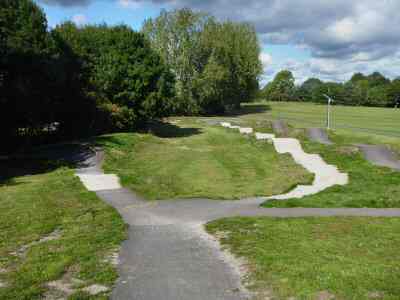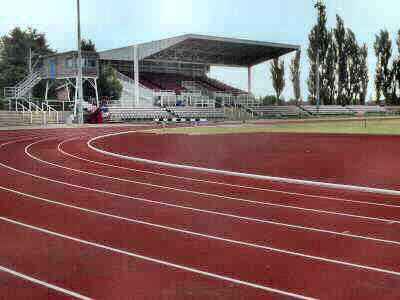OSMASTON PARK

OSMASTON PARK
Osmaston Park is in a mainly built-up area with Moorways Sports complex on the eastern side and Rolls-Royce to the south. This is made up of a prestigious new water park and leisure centre and Moorways Stadium which provides a home for athletics and other sporting facilities. There is a large shopping centre and several other retail outlets off Osmaston Park Road. Foresters Park Leisure Centre was once the home of Normanton Barracks before its demolition in 1981.
PARK LOCATION
The park is on the southern side of Osmaston Park Road about three miles southwest of the city centre. Vehicular access is off Moor Lane opposite the Moorways Sports Complex. The prestigious new water park and leisure centre is the home of a 50m swimming pool. Set slightly back from the water park is Moorways Stadium which provides a base for athletics and other sporting facilities.
THE PARK
Osmaston Park provides a welcome green space in what is a large built-up area. It has three distinct woodland areas, Ash Wood, Oak Wood and across the road at the rear of Moorways Sports Complex, Elm Wood. The grassland is divided by surfaced paths where visitors may take walks to enjoy watching and listening to the wildlife.
There is a Visitor Centre Café and an adventure playground as well as sports facilities. Following approximately £50,000 in joint funding from Derby City Council and British Cycling a new BMX track was opened in late 2021. It is intended for both beginners and advanced riders and offers various riding options. The track is split at halfway providing advanced riders with jumps of different heights and levels of difficulty.
HISTORY
Osmaston, mentioned in the Domesday Book, was once a tiny village. But by the 17th century, the Osmaston Estate was in the hands of the Wilmot family who built Osmaston Hall. Another branch of the same family resided at Chaddesden Hall. The family moved to Catton Hall around 1849. Letting the hall to the Fox family, before eventually selling it and the land to the Midland Railway Company. Who used the hall as offices and laid a railway siding almost up to the front door. They used the northern part of the park to build the carriage and wagon works. The remainder of the estate is now mainly built up, but there is an attractive park and Moorways Sports Village on the southern side of the Outer Ring Road adjoining Rolls-Royce.
A short distance further along Moor Lane the statue of Henry Royce can be viewed alongside an office car park. Rolls-Royce grew from the electrical and mechanical business established by Henry Royce in 1884. Royce built his first motor car in 1904 and in May of that year met Charles Rolls, whose company sold quality cars in London. Henry Royce was a meticulous, self-taught engineer, but he felt more at home designing and improving his cars than he did in selling them. He needed an extrovert salesman to convince buyers of the soundness and engineering excellence that he had built into his cars.



